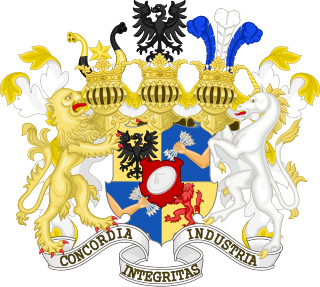
The Rothschild family is a wealthy Ashkenazi Jewish family originally from Frankfurt that rose to prominence with Mayer Amschel Rothschild (1744–1812), a court factor to the German Landgraves of Hesse-Kassel in the Free City of Frankfurt, Holy Roman Empire, who established his banking business in the 1760s. Unlike most previous court factors, Rothschild managed to bequeath his wealth and established an international banking family through his five sons, who established businesses in London, Paris, Frankfurt, Vienna, and Naples. The family was elevated to noble rank in the Holy Roman Empire and the United Kingdom. The family's documented history starts in 16th century Frankfurt; its name is derived from the family house, Rothschild, built by Isaak Elchanan Bacharach in Frankfurt in 1567.
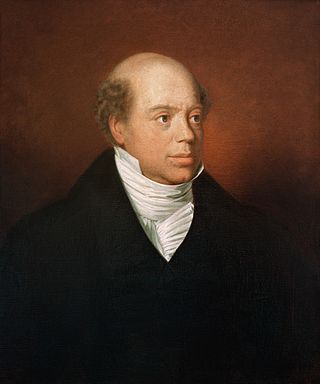
Nathan Mayer Rothschild was an English-German banker, businessman and financier. Born in Frankfurt am Main in Germany, he was the third of the five sons of Gutle and Mayer Amschel Rothschild, and was of the second generation of the Rothschild banking dynasty.

King William Street is a street in the City of London, the historic nucleus and modern financial centre of London. It is a two-way street linking Lombard Street, at its northern end, with London Bridge, which marks the start of the start of the A3 route to Portsmouth.

Mayer Amschel Rothschild was a German-Jewish banker and the founder of the Rothschild banking dynasty. Referred to as a "founding father of international finance", Rothschild was ranked seventh on the Forbes magazine list of "The Twenty Most Influential Businessmen of All Time" in 2005.
The London Gold Fixing is the setting of the price of gold that takes place via a dedicated conference line. It was formerly held on the London premises of Nathan Mayer Rothschild & Sons by the members of The London Gold Market Fixing Ltd.
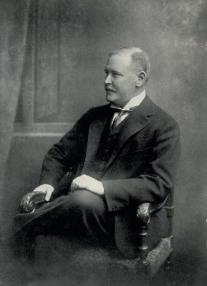
Nathaniel Charles Rothschild, known as "Charles", was an English banker and entomologist and a member of the Rothschild family. He is remembered for The Rothschild List, a list he made in 1915 of 284 sites across Britain that he considered suitable for nature reserves.

Nathaniel Mayer Rothschild, 1st Baron Rothschild, was a British banker and politician from the wealthy international Rothschild family. He was also a hereditary Baron of the Austrian Empire.
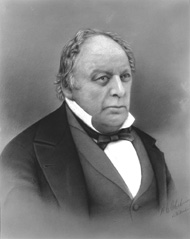
Alexander Parris was a prominent American architect-engineer. Beginning as a housewright, he evolved into an architect whose work transitioned from Federal style architecture to the later Greek Revival. Parris taught Ammi B. Young, and was among the group of architects influential in founding what would become the American Institute of Architects. He is also responsible for the designs of many lighthouses along the coastal Northeastern United States.
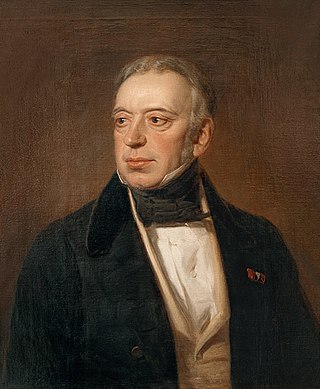
Salomon Mayer von Rothschild was a German-born banker in the Austrian Empire and the founder of the Austrian branch of the prominent Mayer Amschel Rothschild family.

Sir Anthony Nathan de Rothschild, 1st Baronet was a British financier and a member of the prominent Rothschild banking family of England.

The Gresham Club was founded in 1843 and dissolved in 1991. It was named after Thomas Gresham. The Gresham Club's last site was located on Abchurch Lane off King William Street before it was sold to the London Capital Club, which in turn ceased operation in 2018. Following the closure of the London Capital Club, a number of the members relaunched The Gresham Club in 2018 and recreated the raison d'etre of its original predecessor.

HLW is a design, architecture and planning firm headquartered in New York City, with offices in Madison, New Jersey; Stamford, Connecticut; Los Angeles, California; London; and Shanghai. HLW is one of the oldest design firms in the United States, tracing its beginnings to 1885.

George T. Heery, FAIA RIBA FCMAA was an American architect and known for developing the concepts of Construction Program Management, Strategic Facilities Planning and the Bridging Method of project delivery.

The Prudential Assurance Building is a Grade II listed, Victorian Gothic revival style office building located on Dale Street in the centre of Liverpool, England.
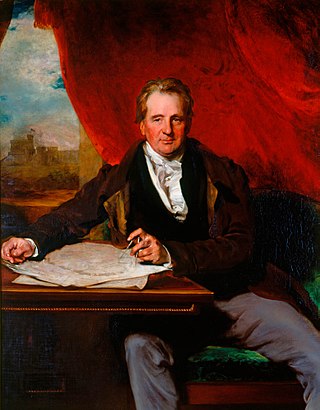
Sir Jeffry Wyatville was an English architect and garden designer. Born Jeffry Wyatt into an established dynasty of architects, in 1824 he was allowed by King George IV to change his surname to Wyatville. He is mainly remembered for making alterations and extensions to Chatsworth House and Windsor Castle.
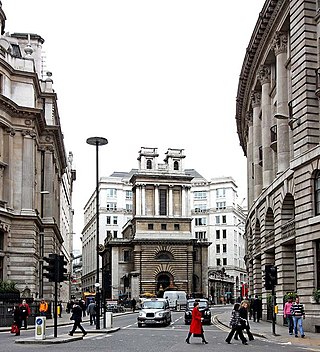
Lombard Street is a street notable for its connections with the City of London's merchant, banking and insurance industries, stretching back to medieval times.
The Rothschild family is a European family of German Jewish origin that established European banking and finance houses from the late eighteenth century.
Hennessy & Hennessy was an architectural firm established in 1912 in Sydney, Australia that was responsible for a series of large scale office buildings in the 1930s in all capital cities in Australia, as well as New Zealand and South Africa, designed by John (Jack) Hennessy (1887–1955), described as Australia's first international architect.

Rothschild & Co is a multinational investment bank and financial services company, and the flagship of the Rothschild banking group controlled by the French and British branches of the Rothschild family.
The Alliance Assurance was formed in 1824. It merged with Sun Insurance in 1959 to form Sun Alliance Insurance.

















